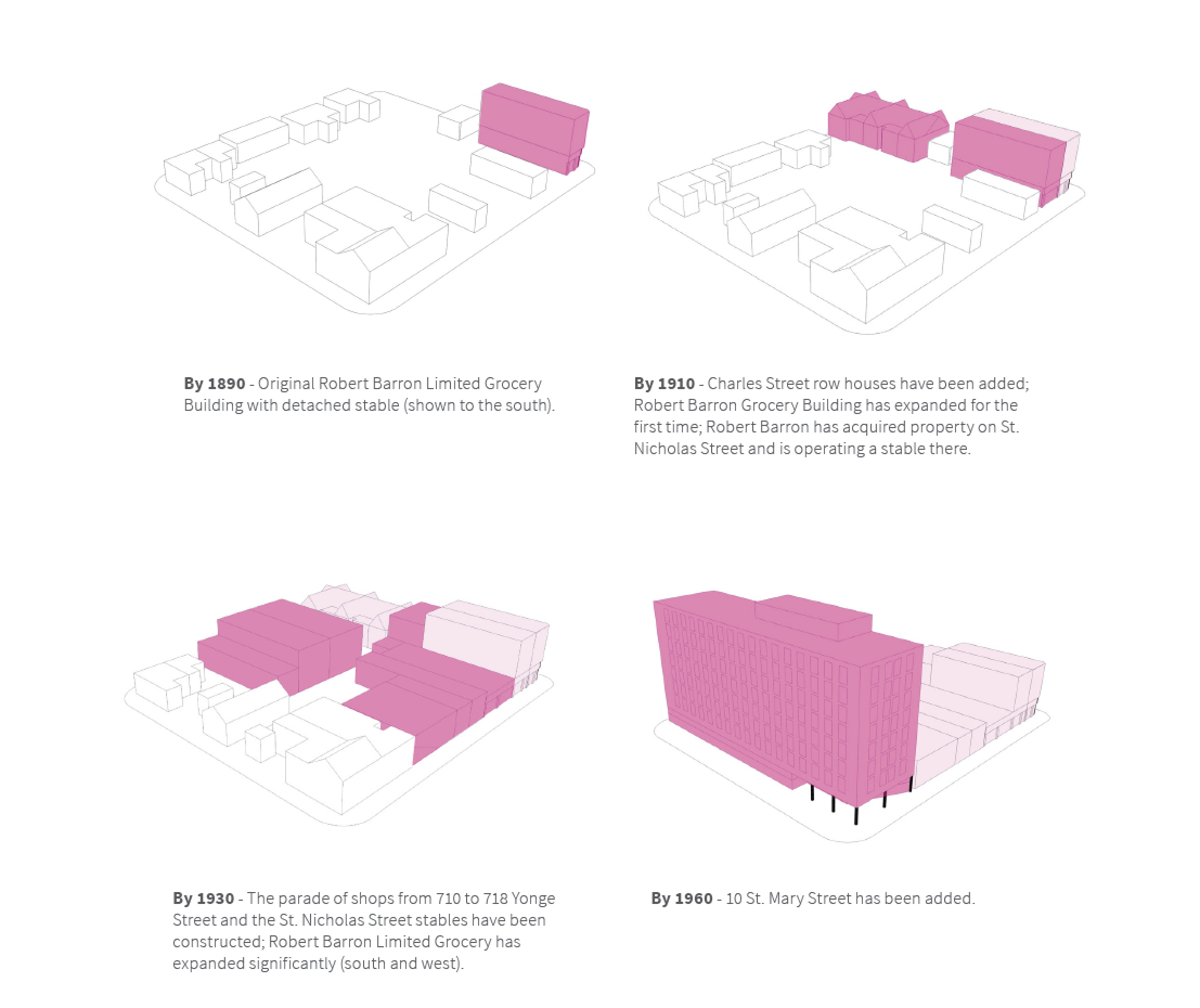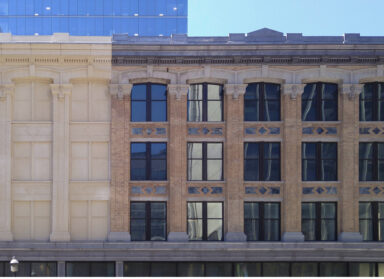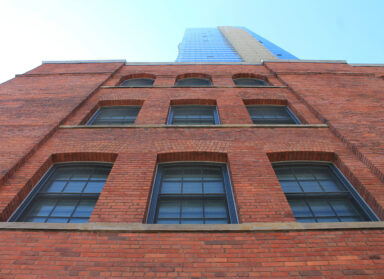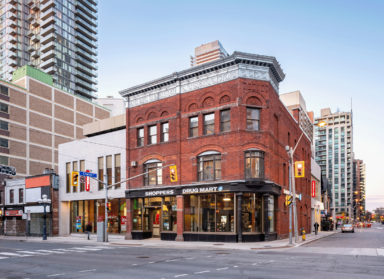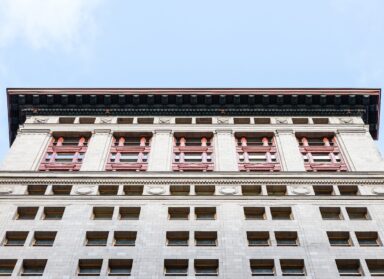For two decades, we have called 10 St Mary Street our home, an eight storey modernist office building (1957) designed by the architects Mathers and Haldenby, whose offices were located on the 8th floor of the building. It seems fitting today as we say goodbye and start a new chapter in ERA’s story, that we’d share some of the history of this place that’s grown along with us all these years.
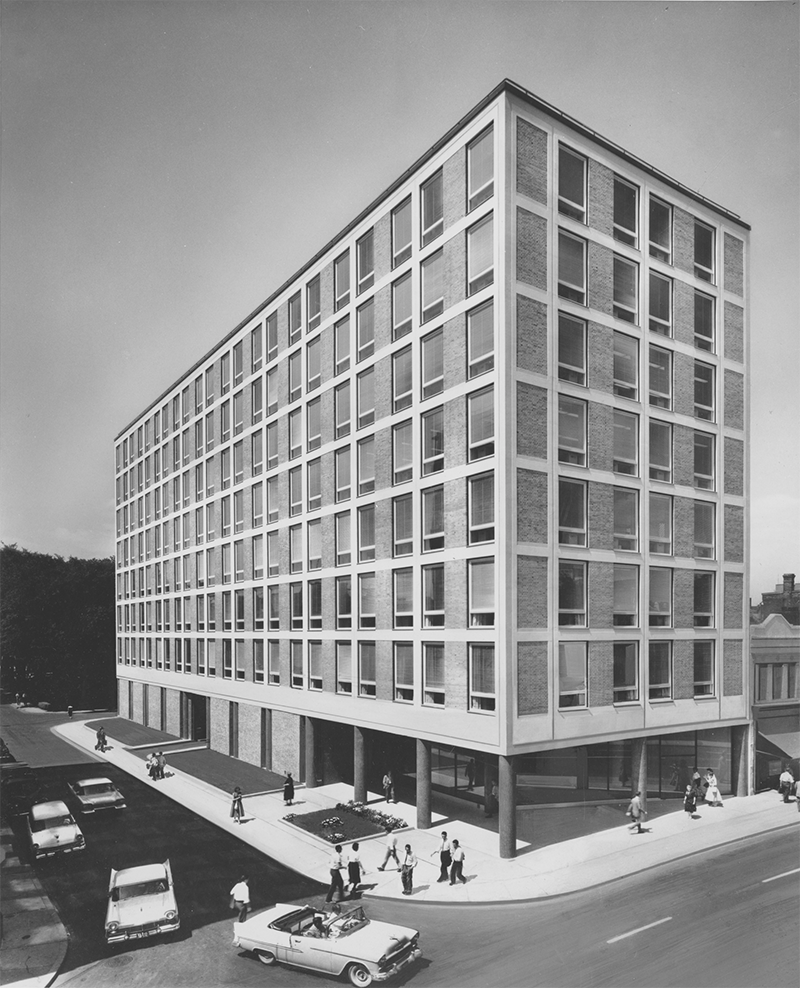
The ground floor suite of 10 St. Mary Street, which faces both Yonge and St. Mary streets, was originally conceived as a retail space with a strong relationship to the public realm. Until recently, this suite has been occupied by a chain of fast food restaurants. The open volume at the base of the building has been partially enclosed as a restaurant terrace.
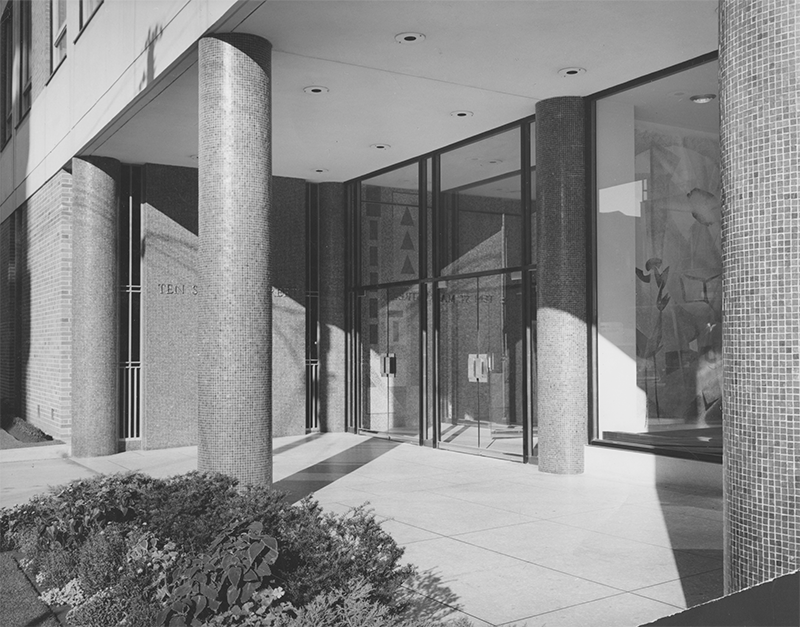
The Site sits on land originally owned by the Buchanan and Elmsley families in the early 19th century. In 1848 Captain John Elmsley donated part of his land to St. Michael’s College and St. Basil’s Church and began subdividing the property, naming local streets after his favourite saints. Many of the buildings that presently occupy the block bounded by Yonge, St. Mary, St. Nicholas and Charles streets were constructed during the latter half of the 19th and early 20th centuries, following the extension of Charles Street (formerly Czar Street) westward from Yonge Street in the 1880s. As Yonge Street developed as a commercial strip, cross streets were often developed with row houses. The length of the block along Charles Street West up to the westward addition to 720 Yonge Street is occupied by a row of residential buildings constructed in 1891.
The Yonge Street properties (with the exception of the mid-century building at 10 St. Mary Street) represent the second generation of storefronts along the Yonge Street corridor, which was revitalized with increased commercial activity at the turn of the last century. These were constructed in 1909 as a parade of shops with similar detailing; The mid-block shopfront properties at 710-718 Yonge Street first appear on Fire Insurance Plans in 1912.
The portion of the Site at the corner of St. Mary and St. Nicholas Streets was originally residential, but primary source documents show automotive uses began in the early 20th century and continued until the 1940s. In the 1920s the Holden Vulcanizing Works and Johnson Motors Repair operated at 79 St. Nicholas Street. The Uptown Auto Body and Fender Repair Co. were replaced in the 1940s by General Auto Body and later Pep Boys Garage.
Coles Bookstore purchased the Barron properties in the 1940s, using the Yonge Street storefront for retail and the former stables on St. Nicholas for storage. The fine-grained Victorian buildings along the southern portion of the block were replaced in 1957 by the 8-storey office building at 10 St. Mary Street, designed by Mathers & Haldenby. In the latter half of the 20th century, the properties on St. Nicholas Street witnessed a string of tenants and a wide variety of uses, including furniture stores, art galleries, restaurants and discotheques.
